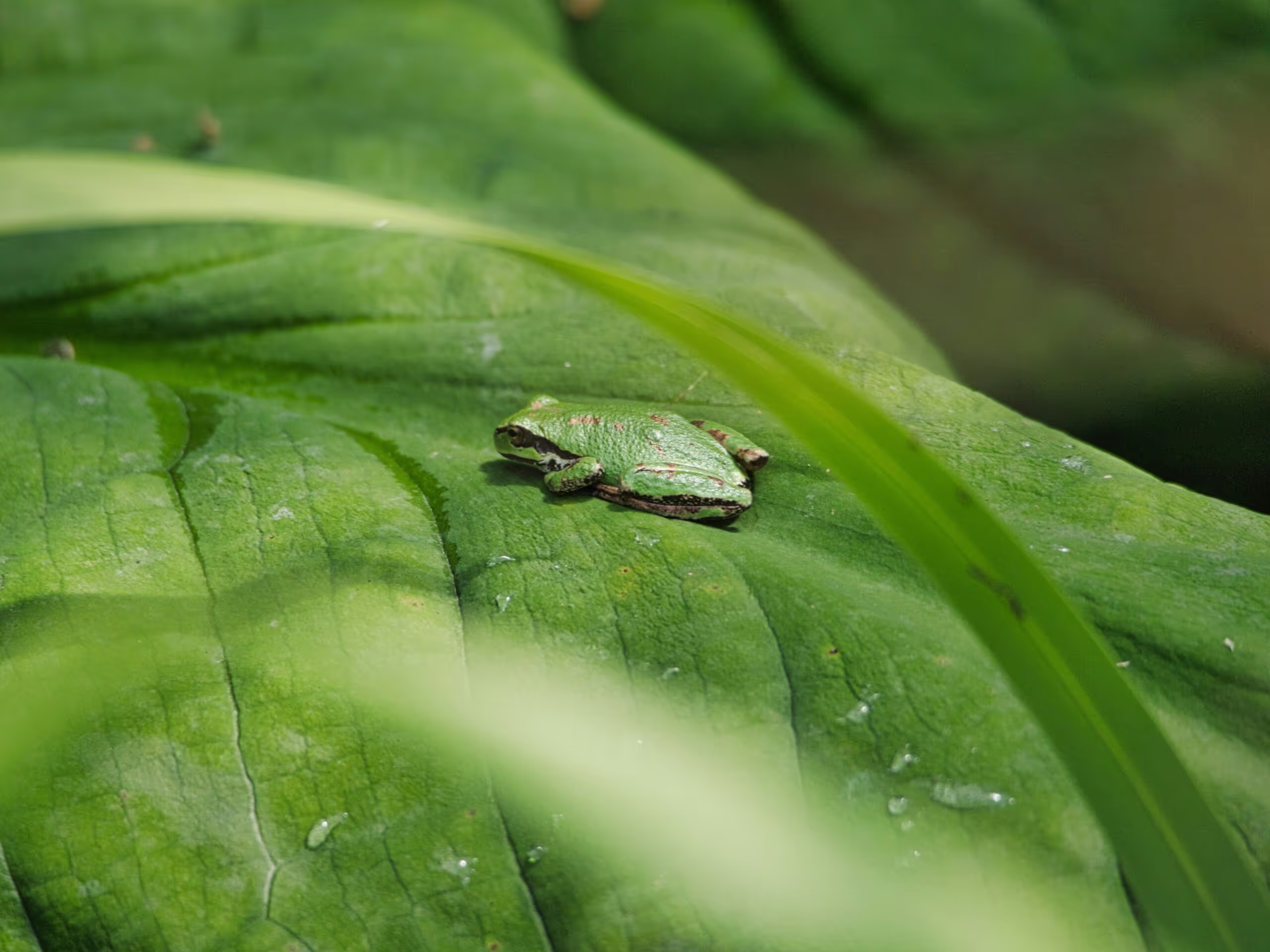The Pacific Tree Frog: Part 2


Welcome to part two of our two-part series about the Pacific Tree Frog! In this installment, we’ll take a look at their vocalization, address the debate surrounding how long their lifespan is, and explore whether there is just one Pacific Tree Frog species or three. Let’s begin!
Vocalization
Because Pacific Tree Frogs make their homes on the ground amongst shrubs and grasses, they might not always be the easiest to spot. However, they are heard quite often, as their calls are the most common frog vocalizations that are heard in the regions that they call home (3). Chances are that, if you’ve been to an area that features a lake, river, or creek, you’ve probably heard the calls of one or more Pacific Tree Frogs.
Male Pacific Tree Frogs will adapt their calls depending on the need that exists for vocalization. During the breeding season, they will use loud, two-part advertising calls to attract the attention of other frogs (3). These calls sound like “rib-it” and “crek-ek” (3). During the rest of the year, they will use a slower, “trilled” encounter call, a “release” call, and a “land” call as required (5). There are a couple of exceptions to this rule.
The Lifespan Debate
As we were preparing this series of posts, we discovered that different reputable sources had very different answers to the question how long the lifespan of the Pacific Tree Frog is. Here is what we found, in order from longest potential lifespan to shortest.
It is important to note that animal species having a wide degree of possibilities for how long their lifespans might be isn’t unheard of. In fact, according to PBS, the lifespan potential for frogs in general may be anywhere from a single day to thirty years (10). The fact that the Pacific Tree Frog’s potential lifespan has been narrowed down to be anywhere from one day to twelve years shows that scientists have been working to answer this question already. However, the lack of consensus that appears to exist shows that more research is needed to narrow down how long the Pacific Tree Frog’s lifespan really is. It may be very short. It may be very long. Or it may be somewhere in between. Science just doesn’t appear to have a definitive answer for us right now. But it might someday, so keep your fingers crossed that this mystery is eventually solved!

Photo by Elton Smith: https://www.pexels.com/photo/pacific-tree-frog-on-green-leaf-11675473/
One or three? How many Pacific Tree Frog Species are there?
This is perhaps the greatest debate surrounding the Pacific Tree Frog. Is there just one species or three? For decades, it was believed that there was only species. However, that changed in 2006, when evidence was published that the Pacific Tree Frog actually consisted of three separate species (5). The separate species were as follows:
It is worth noting that Pacific Tree Frog was apparently being classified as a “tree” frog when it was actually a “Chorus frog” (5). This is why the names of the three separate species did not include the word “tree”. This re-classification did not sit well with the Washington State Department of Fish and Wildlife (WDFW). The agency openly refused to refer to the local species of the Pacific Tree Frog, the Northwest Chorus Frog, by its new name (5). They decided that the species should continue to be called the Pacific Tree Frog, citing that “the vernacular doesn't have to be an accurate reflection of phylogeny” (5). In other words, just because it was officially classified as a “chorus” frog didn’t mean that it had to be acknowledged as being one. It could instead be acknowledged as a “tree” frog since that, according to WDFW, is what was “traditional” and “well-recognized” (5).
In 2017, it was determined that the DNA and morphological studies that were used to determine that the Pacific Tree Frog needed to the split into three separate species were not adequate enough to justify doing so (1, 5). As a result, they were merged back into a single species, with “Pacific Tree Frog” returning as its name. However, the re-merging of the species may not have been fully embraced yet, as some of the sources we reviewed while preparing this species referred to the species as the “Northern Pacific Tree Frog” (1, 7, 11, 12). It is possible that these sources may not have been updated since the species was re-merged into one as all of these sources had no dates indicating when they were last updated.
Conclusion
This brings us to the end of our two-part look at the Pacific Tree Frog. We hope that you have found it informative and enjoyable. Thanks for reading!
References
© Ian Caldwell, January 2024
Touch whale bones, examine shipwreck artifacts and connect with the coast's living history.

Support our mission, get involved in educational programs, or contribute through donations and volunteering.